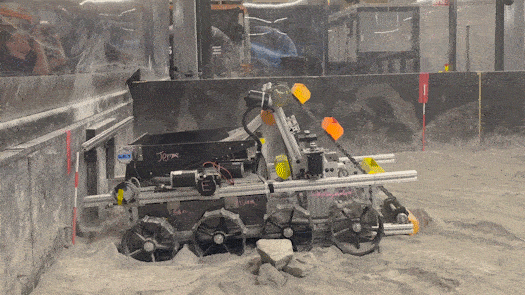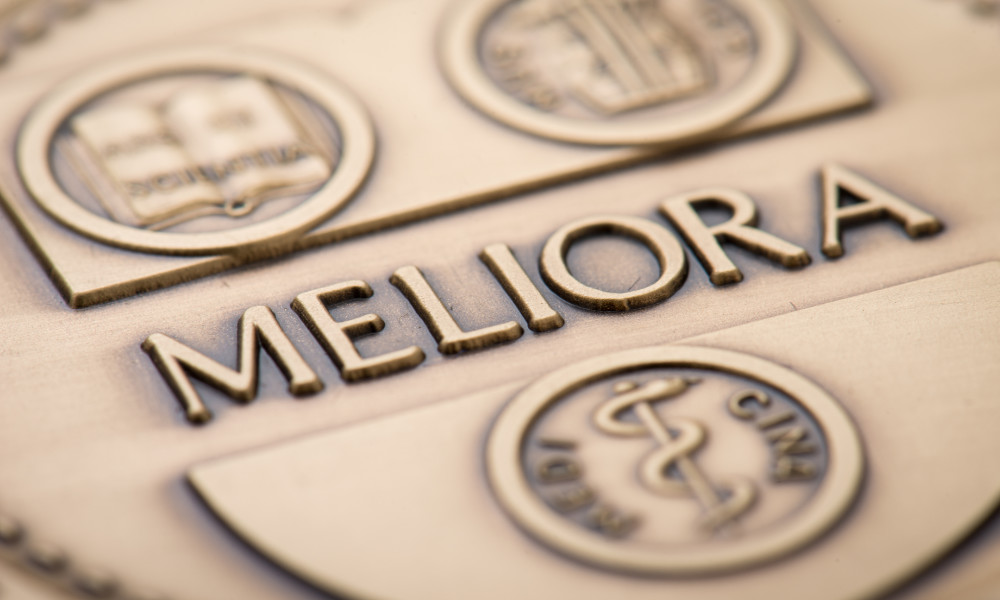An art and geology double major, University of Rochester senior Gabrielle Meli brings scientific processes to her art.
As a mere tween, Gabrielle Meli ’22 had already fallen in love twice: first with art; then with science.
“I loved art my entire life. My mom encouraged my artistic path, and then in eighth grade, I fell in love with the earth sciences,” she explains. She thought she would pursue a career either in art or in geology. Then, she says, “the older I got, and the more I took high school and college classes, I thought, ‘why do they have to be separate?’”
Meli is one of seven senior studio art majors in the Department of Art and Art History who presented an interdisciplinary thesis exhibition at the end of the 2022 spring semester. Her show is called Birefringence—a phenomenon that occurs when plane-polarized light passes through minerals under a microscope. Geologists can identify minerals by how they behave in this cross-polarized light. “It will be kind of brownish, and sometimes it can be green depending on what mineral you’re looking at,” she says. “When you cross those polarized lights, you get this beautiful, colorful image of the minerals.”
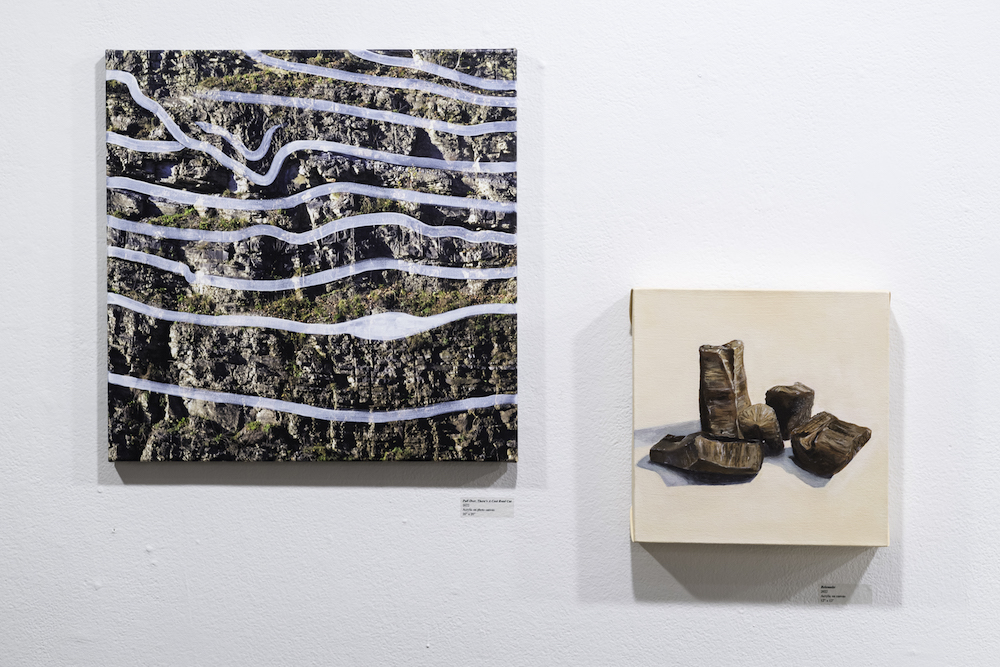
STEM fields and art are “more related than people think,” says Meli, a Henrietta, New York, native who will graduate in May 2022 with a double major in geology and studio arts.
In the summer of 2021, she participated in a field camp in Cardwell, Montana, through Indiana University, where she got hands-on experience on how field geologists work. “It was a great experience,” she says. “We went to Glacier and Yellowstone and studied the local geology in the Tabacco Root Mountains.”
Serendipitously, for Meli, the work that geologists do involves maps, drawings, and diagrams. Researchers are encouraged to sketch what they see as they take field samples and look at rocks. “We map and plan out what we think the rocks are doing underground. In my notebook, there are so many sketches of rocks that I see or cross-sections that I see of potential folds or faults,” she says.
Tapping foraged minerals and tackling gender inequality
Meli uses ordinary materials in her show, like acrylic paint and CMYK screen-printing, but true to form, she experiments with foraged materials from her geological finds to create her paint pigment. “It was a super interesting process,” she says. One of her pieces, Beartooth, includes an ink derived from a copper oxidation reaction. The process involves soaking copper scraps in a salt and vinegar bath; the salt is a catalyst for the reaction, but the vinegar helps oxidize the copper and creates a “beautiful blue liquid,” says Meli.
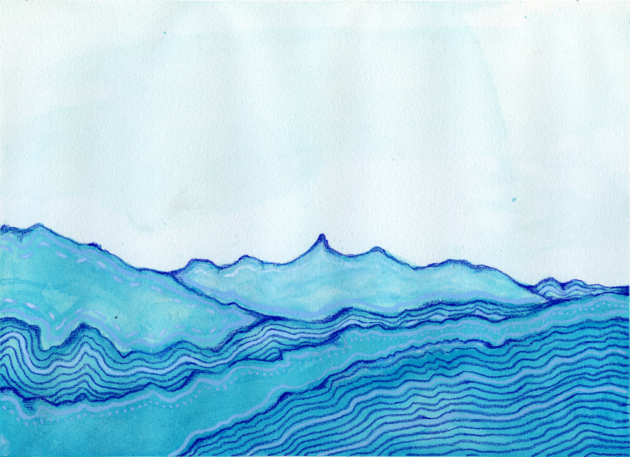
Meli became a teaching assistant in an introductory printmaking course taught by Mizin Shin, an assistant professor in the art and art history department. Shin, who taught Meli in advanced printmaking, recalls recommending to Meli a book by Toronto Ink Company owner Jason Logan called Make Ink: A Forager’s Guide to Natural Ink Making during a class critique of one of Meli’s works. Meli made good use of the suggestion. “In a short time, I saw that she had a lot of professionalism in her work,” Shin says.
Combining art and science isn’t the only thing on Meli’s mind these days. She also uses her art to address women’s inequality in STEM fields. One of her pieces is a crochet textile that depicts a mineral under a microscope and a thin section of rock. She observes there’s a stigma against craft arts, such as crocheting, knitting, and quilting, which are often not seen as serious art forms. “I wanted to show how you can get to the same image by taking a picture of it or crocheting it, but one will be seen more seriously than the other”—even when the crocheted image involved significantly more work than the photograph.
Meli will continue at the University in the one-year teaching and curriculum program at Warner School of Education. She sees a future for herself in a nontraditional teaching setting where she can focus on STEM and art. “I never pictured myself being a teacher, but I realized I liked the community and the togetherness when you are teaching and helping someone learn,” she says. “It will be a fun way to combine my science.”
Read more
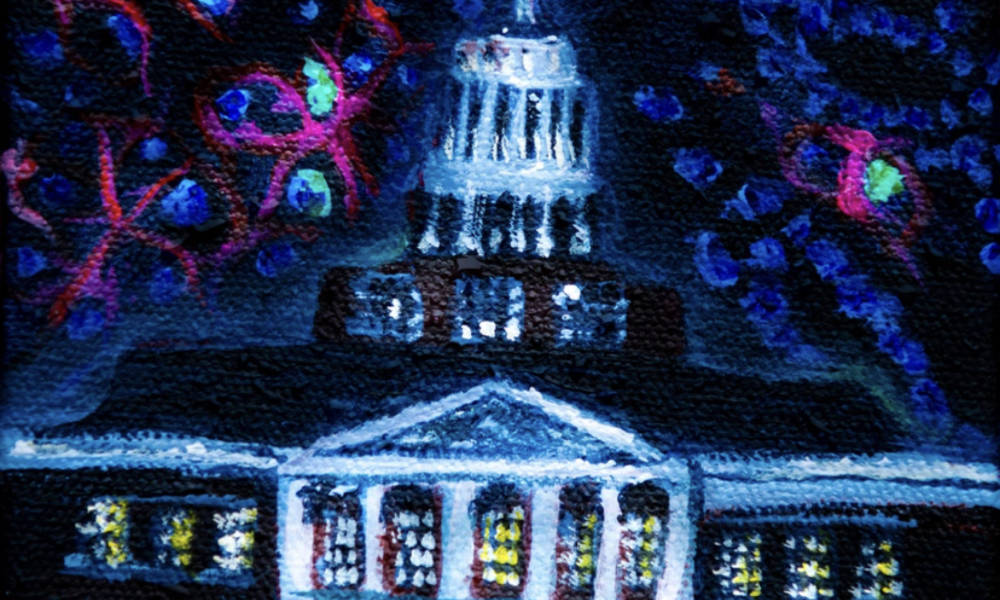 Finding art in the tools of science
Finding art in the tools of science
Rochester students, faculty, and staff found creative ways to turn bacterial cells, salivary glands, and oil spills into winning entries in the annual Art of Science Competition.
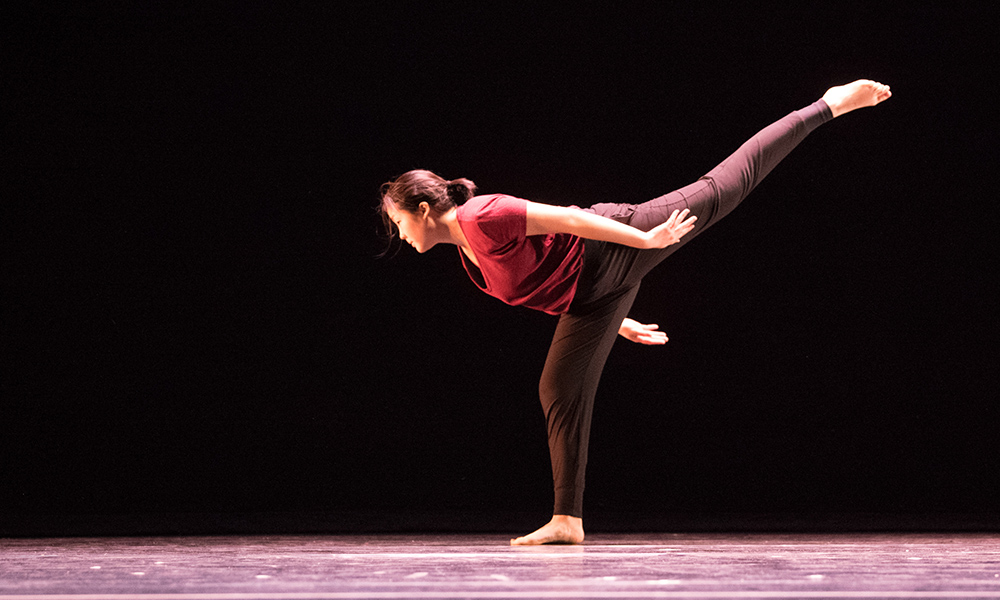 Understanding the biology of grief through dance
Understanding the biology of grief through dance
Erin Dong ’18 created a dance called ‘The Beautiful Awful: Experiencing Grief Through Movement’ that combines aspects of her biology and dance majors.
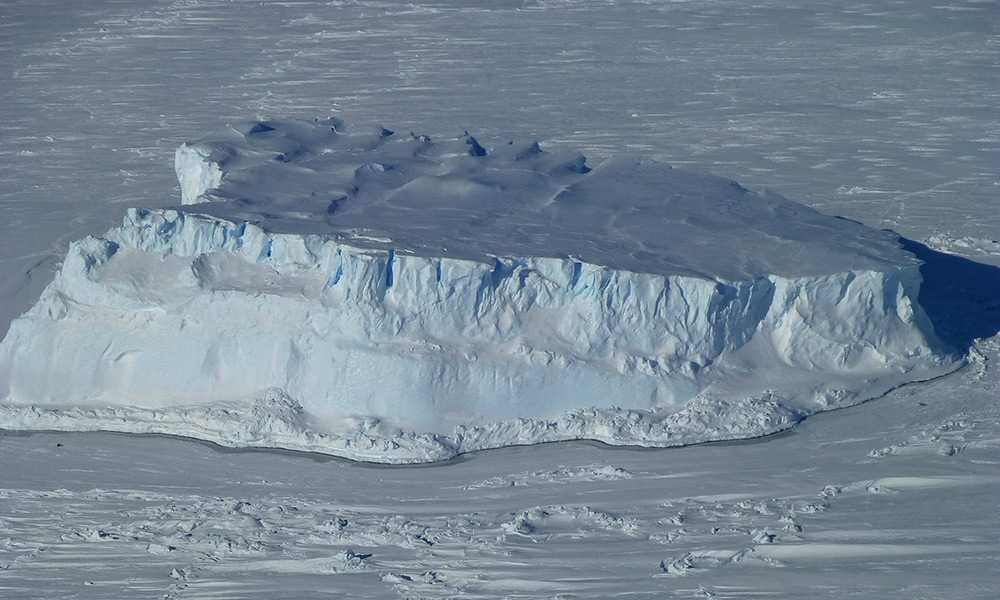 Researchers unlock clues to a dramatic chapter of Earth’s geological history
Researchers unlock clues to a dramatic chapter of Earth’s geological history
Researchers from the University of Rochester are shedding new light on the question of “Snowball Earth.”

